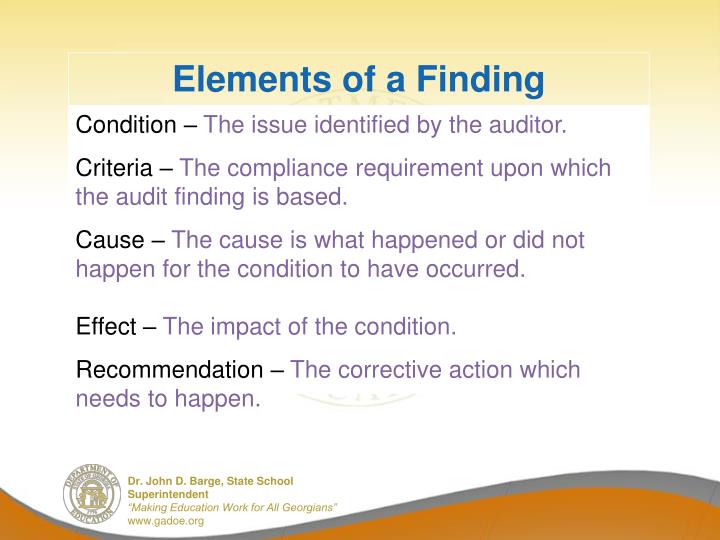
This definition is designed to give flexibility in determining your program, but it is often the case that the appropriate ‘sweet-spot is not found, leading to under, or over auditing.Īudits assure the performance of an ISMS against the objectives set for it.
#COMMON AUDIT FINDINGS ISO#
Within clause 9.2, the management requirements of ISO 27001 state that the organisation must conduct internal audits at “planned intervals” – however you choose to define these intervals.Ĭommon mistake: Not defining appropriate “planned intervals” in the audit program You have therefore engineered an audit trap into your management system. It’s unforgivable as you define your management system to suit your business. Practically, an internal ISO 27001 audit helps organisations ensure they adhere to their self-prescribed requirements (also defined in the ISMS) and the standard requirements.Ĭommon mistake: Defining in your ISMS that something happens – when it doesn’t happen in reality An ISO 27001 internal audit is the process of determining if your ISMS is working as designed and looking for improvements (as per clause 10.2 – catchily titled “continual improvement”). The ISMS consists of the necessary processes, procedures, protocols, and people to protect its information and information systems against the ISO 27001 standard framework. As long as the relevant findings emerge at the end of the audit process, then that is a successful outcome. The ‘tone’ of the internal audit report can (and we think must) be driven by the auditor to be friendly and collaborative. In the case of an ISO 27001 Information Security Management System (ISMS), these audits are focused on information security related arrangements.Ĭommon mistake: Performing a certification audit in an officious and over-formal manner These are primarily outdated however – enlightened organisations see audits as an improvement tool for their management systems and process. “Audit” is a word that nobody likes to hear – it historically and generally has negative and onerous connotations. Occasionally taking an objective view at your processes and systems can release lots of untapped value.
#COMMON AUDIT FINDINGS HOW TO#
Sadly, sometimes historically, the audits are seen as a non-value adding pain however – we’ll explain why this can happen and how to avoid it with the help of our internal audit checklist.Ĭommon mistake: Not embracing the internal audits as a business improvement tool This means that there is considerable scope for streamlining the audit processes and gaining real business benefits from your internal audits. The requirements are very minimal, however when examined objectively and the detail of them is very un-prescriptive. Internal audits of the management system are a mandatory requirement of ISO 27001 and all other mainstream ISO standards.



 0 kommentar(er)
0 kommentar(er)
